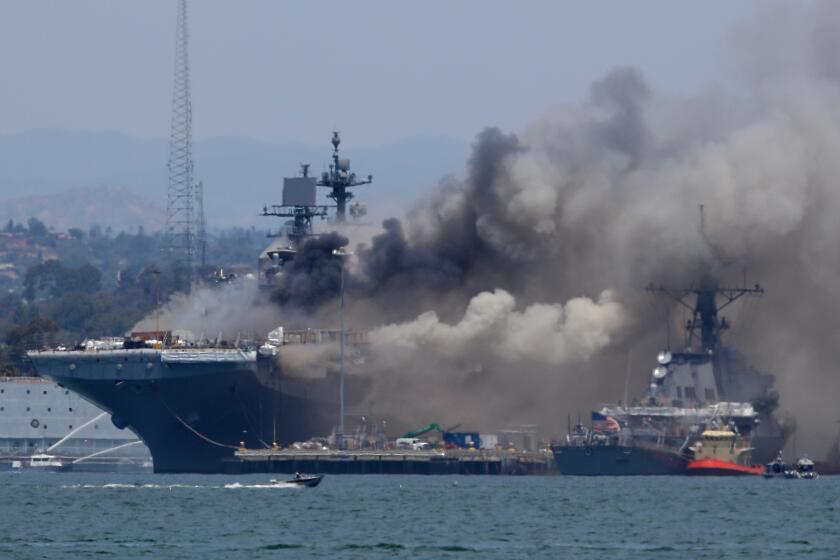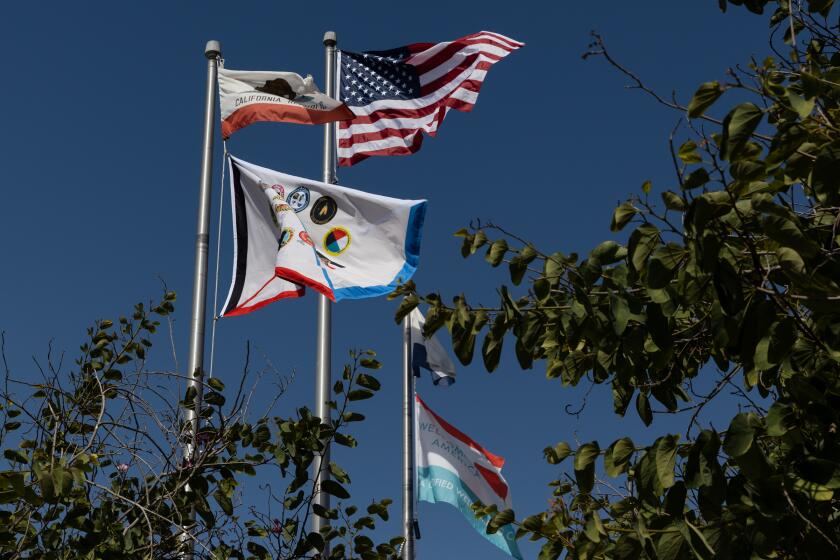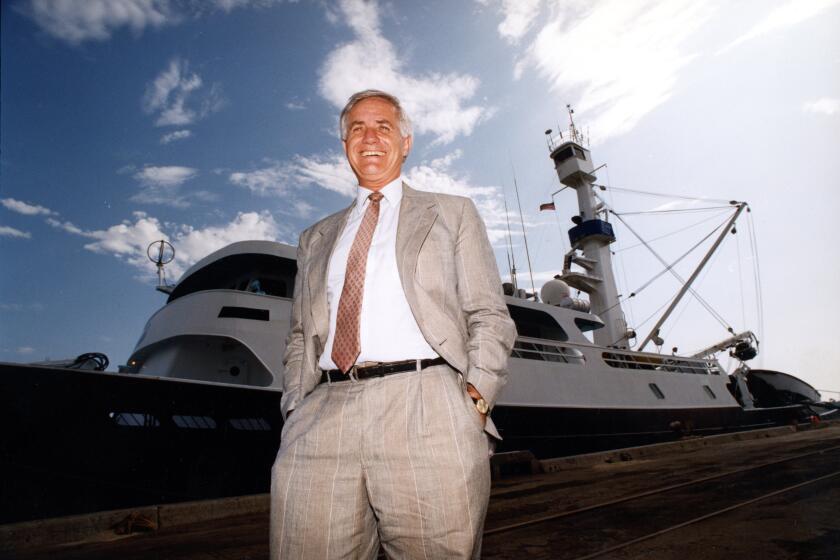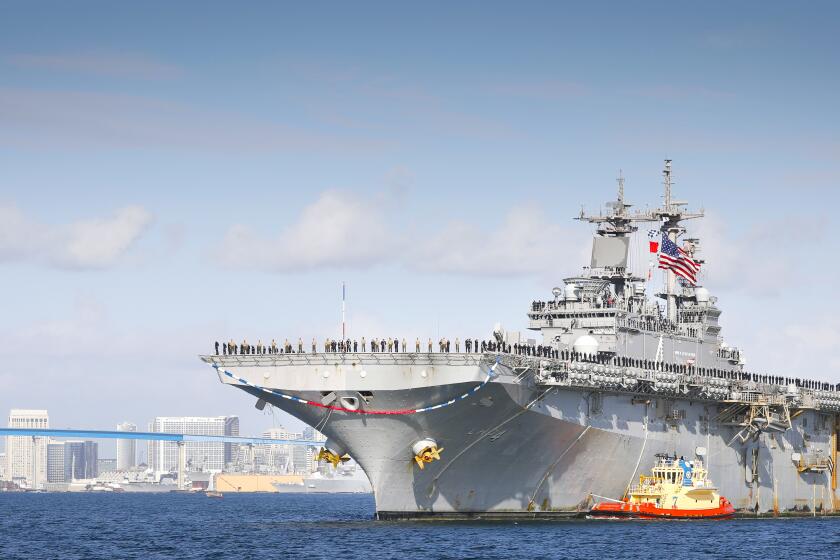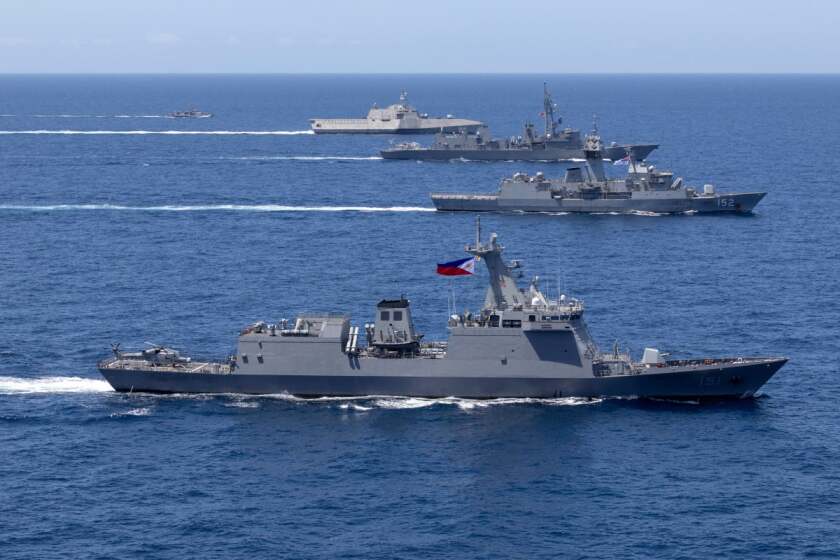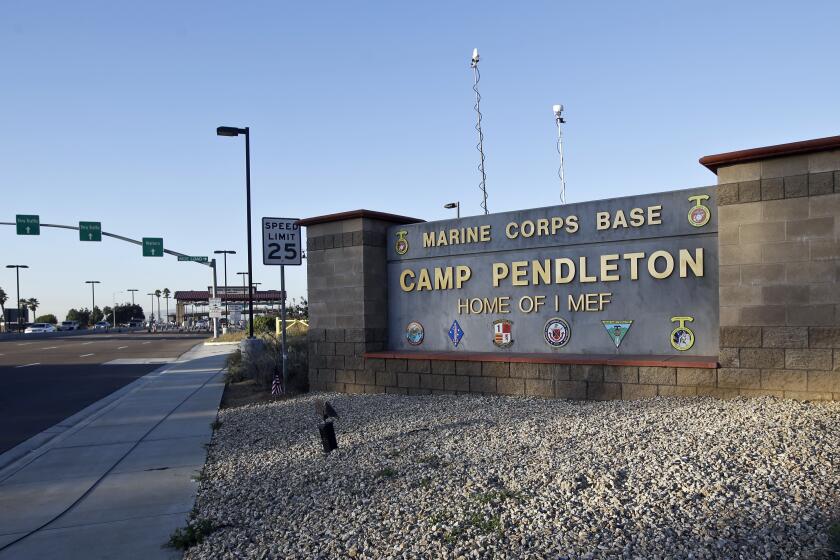Lessons of Navy ship blazes are ‘lost,’ leading to more disasters like Bonhomme Richard
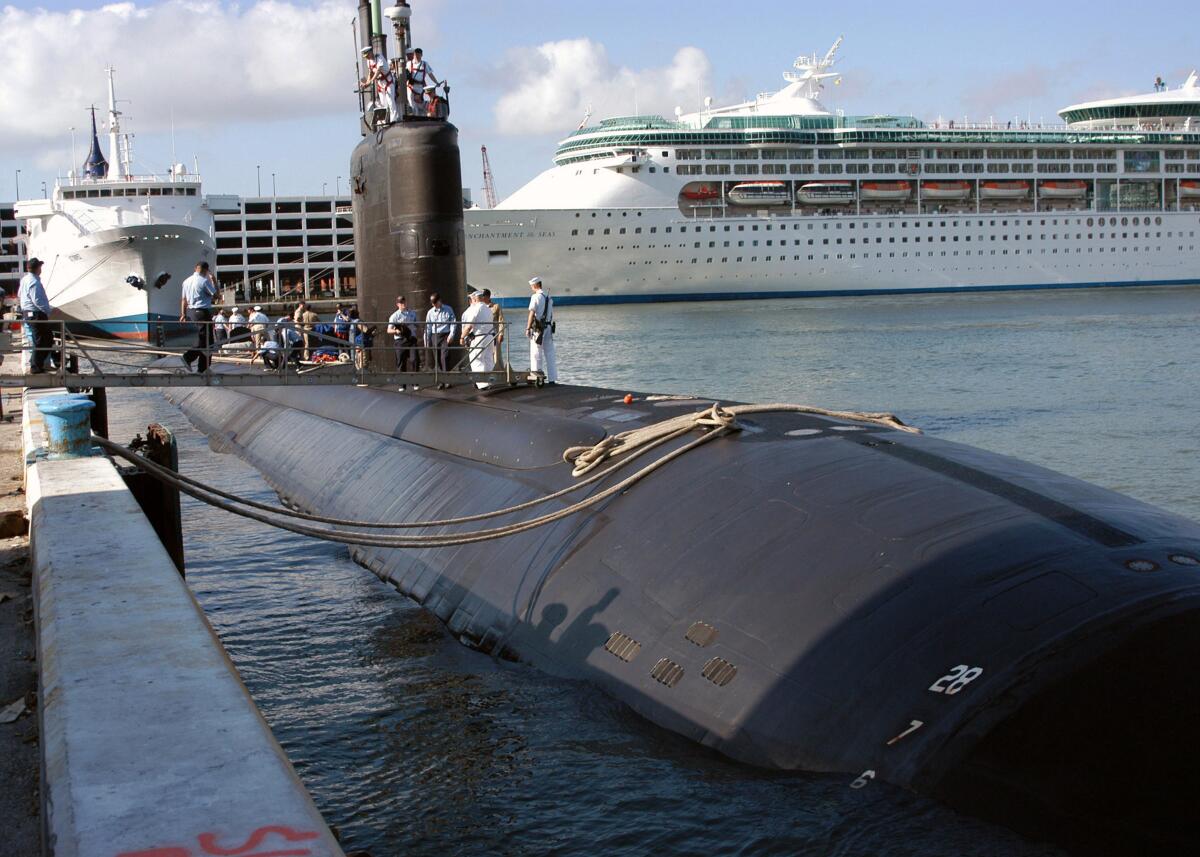
When it comes to shipboard fires, the Navy isn’t learning from its mistakes.
That’s the central message of a fleet commanders’ report released Wednesday that looked at 15 fires occurring over a 12-year period, culminating with the July 2020 blaze in San Diego that damaged the amphibious assault ship Bonhomme Richard so severely it was decommissioned. The report was issued the same day as a massive investigation into the missteps that allowed the 844-foot Bonhomme Richard to burn for almost five days.
“In each fire,” the 60-page report concludes, “adherence to existing fire safety requirements at the time of the incident would have prevented the fire or, at a minimum, lessened the severity of the damage.”
It said many of the problems persist, contributing to what it called “a current state of elevated risk” when it comes to fires. It made more than 50 recommendations for improvement.
The assessment by a “Major Fires Review” panel is a companion piece to the investigation of the Bonhomme Richard disaster, which was also released Wednesday.
It identified a dozen issues preventing the Navy from implementing “enduring change,” including no central organization with the resources and authority to gather information about fires, recommend fixes, and enforce new standards.
“Lessons learned are not effectively collected and are lost over time,” according to the report.
While a junior sailor faces arson charges, a Navy investigator recommends 36 service leaders also face punishment
It also said there was an ongoing “lack of appreciation for the hazards” associated with ships undergoing repairs, when staffing is lower and the amount of combustible materials is higher. Thirteen of the 15 fires studied in the report occurred during maintenance.
A similar finding was made after a fire in 2012 ravaged the Miami, a nuclear submarine in dry-dock in Maine. The Navy issued a 200-page study and put in place policies and procedures for safeguarding ships during repairs.
Within days of the Bonhomme Richard fire, Navy officials were openly wondering if the shortcomings identified on the Miami had played a role here, too.
“Did we fully and adequately implement those recommendations?” Admiral Michael Gilday, chief of naval operations, asked in an interview with Defense News back then. “When we completed the investigation, did we just leave it in the rear-view mirror or did we no-kidding take it seriously?”
The answer, according to the new report: rear-view mirror.
“Historical analysis of the 15 events revealed that ships continue to be less than fully prepared for the maintenance environment, the phase at which the risk of fire is the greatest,” it concludes. As part of the study, the panel made 38 visits to ships and found “lingering shortfalls” in the implementation of safety measures there, too.
Authorities have blamed both the Miami and Bonhomme Richard fires on arson, and the report says that’s an ongoing threat that should be taken more seriously. It pointed to data provided by the Naval Criminal Investigative Service showing 50 reported or suspected arsons on board ships from 2009-2021, about four per year.
“Arson and gross negligence such as careless or unauthorized smoking are extremely difficult to prevent but do represent a significant problem, particularly during duty-section only hours when detection and response capability and capacity are significantly reduced,” the report says. “The Navy currently lacks a formal approach to addressing this specific insider threat.”
Among the report’s other findings:
- In 11 of the 15 fires, there was “widespread noncompliance with fundamental practices,” including poor watchstanding and the improper handling and storage of hazardous materials and combustibles.
- Four of the 15 fires were directly attributed to improper “hot work” by shipyard crews, such as welding or riveting. But the problem is more prevalent than that, reflecting a “gross under-appreciation of the risk associated with this activity.”
- There is too much reliance on formal schools and outside certification and not enough on day-to-day training in basic firefighting, incident management, and firefighting in an industrial environment.
- Nine years after the Miami submarine fire brought a major fire-prevention overhaul, the Navy has not consistently followed its requirements, especially when ships are undergoing maintenance.
- Smaller fires go under-reported, making it harder for the Navy to identify trends and pre-cursor events that can lead to major disasters.
In releasing the report Wednesday, Navy officials said they are creating a new, permanent oversight board to make sure, this time, lessons are learned. And remembered.
Get Essential San Diego, weekday mornings
Get top headlines from the Union-Tribune in your inbox weekday mornings, including top news, local, sports, business, entertainment and opinion.
You may occasionally receive promotional content from the San Diego Union-Tribune.
